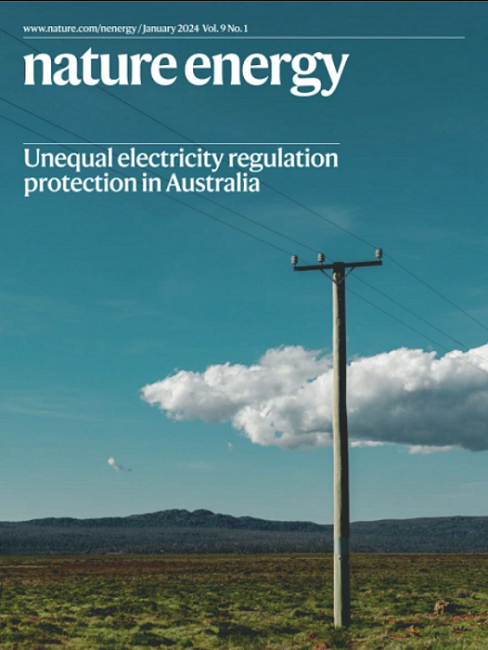Modulating crystal growth of formamidinium–caesium perovskites for over 200 cm2 photovoltaic sub-modules
IF 60.1
1区 材料科学
Q1 ENERGY & FUELS
引用次数: 44
Abstract
Upscalable fabrication of efficient and stable perovskite solar modules is urgently needed for commercialization. Here we introduce methylammonium chloride additives in the co-solvent system of N-methyl-2-pyrrolidone/N,N-dimethylformamide to control the formation of intermediate phases during the growth of formamidinium–caesium lead triiodide perovskite films. We achieve high-quality films upon drying without the use of anti-solvent. By implementing bulk and surface passivation, champion efficiencies of 24.02% for a small-sized solar cell and 20.5% for a 5 cm × 5 cm solar mini-module on an aperture area of 22.4 cm2 (geometric fill factor ∼ 96%) are achieved by spin-coating. The fully blade-coated perovskite solar sub-module demonstrates a champion efficiency of 15.3% on an aperture area of 205 cm2. The solar mini-module exhibits impressive operational stability with a T80 lifetime of over 1,000 h at maximum power point tracking under continuous light illumination. Upscaling perovskite solar cells requires control of the crystallization of perovskite films over large areas. Here, the authors tailor the composition of the precursor ink and achieve 15.3% efficient solar cells over a 205 cm2 area without the use of anti-solvent.

用于 200 平方厘米以上光伏子模块的甲脒铯过氧化物晶体生长调控技术
高效稳定的过氧化物太阳能模块的商业化迫切需要可升级的制造工艺。在这里,我们在 N-甲基-2-吡咯烷酮/N,N-二甲基甲酰胺共溶剂体系中引入了甲基氯化铵添加剂,以控制甲脒铯三碘化铅包晶石薄膜生长过程中中间相的形成。在不使用反溶剂的情况下,我们在干燥后获得了高质量的薄膜。通过实施体层和表面钝化,在 22.4 平方厘米的孔径面积上(几何填充因子 ∼ 96%),小型太阳能电池的冠军效率达到 24.02%,5 厘米 × 5 厘米太阳能迷你模块的冠军效率达到 20.5%。完全叶片涂层的过氧化物太阳能子模块在 205 平方厘米的孔径面积上显示出 15.3% 的冠军效率。在连续光照下进行最大功率点跟踪时,该太阳能微型模块的 T80 寿命超过 1,000 小时,显示出令人印象深刻的运行稳定性。要扩大包晶体太阳能电池的规模,就必须控制大面积包晶体薄膜的结晶。在这里,作者对前驱体墨水的成分进行了定制,在不使用反溶剂的情况下,在 205 平方厘米的面积上实现了 15.3% 的太阳能电池效率。
本文章由计算机程序翻译,如有差异,请以英文原文为准。
求助全文
约1分钟内获得全文
求助全文
来源期刊

Nature Energy
Energy-Energy Engineering and Power Technology
CiteScore
75.10
自引率
1.10%
发文量
193
期刊介绍:
Nature Energy is a monthly, online-only journal committed to showcasing the most impactful research on energy, covering everything from its generation and distribution to the societal implications of energy technologies and policies.
With a focus on exploring all facets of the ongoing energy discourse, Nature Energy delves into topics such as energy generation, storage, distribution, management, and the societal impacts of energy technologies and policies. Emphasizing studies that push the boundaries of knowledge and contribute to the development of next-generation solutions, the journal serves as a platform for the exchange of ideas among stakeholders at the forefront of the energy sector.
Maintaining the hallmark standards of the Nature brand, Nature Energy boasts a dedicated team of professional editors, a rigorous peer-review process, meticulous copy-editing and production, rapid publication times, and editorial independence.
In addition to original research articles, Nature Energy also publishes a range of content types, including Comments, Perspectives, Reviews, News & Views, Features, and Correspondence, covering a diverse array of disciplines relevant to the field of energy.
 求助内容:
求助内容: 应助结果提醒方式:
应助结果提醒方式:


